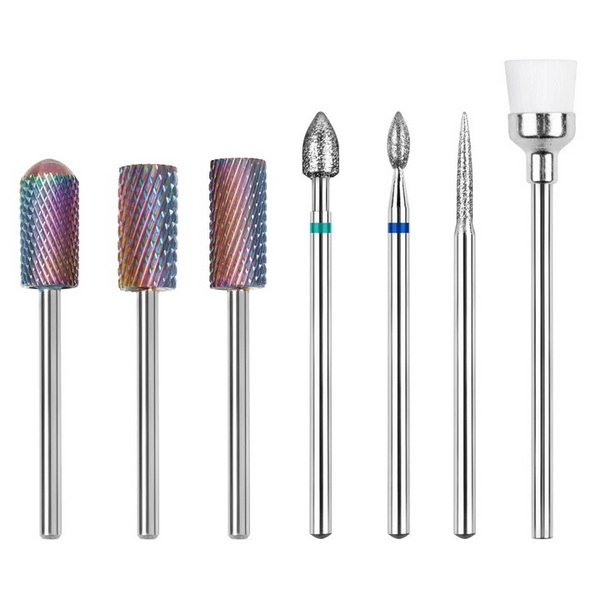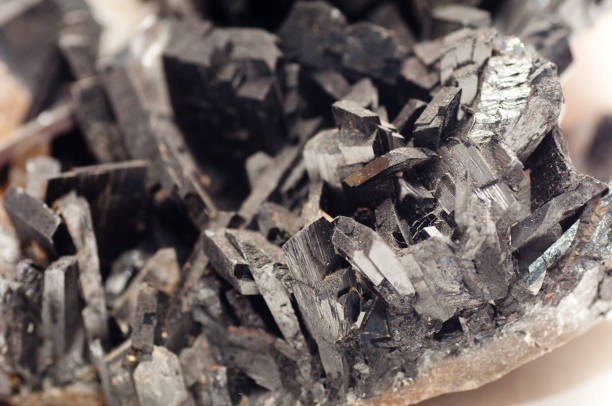Content Menu
● Introduction
● What Are Tungsten and Tungsten Carbide?
>> Tungsten
>> Tungsten Carbide
● Chemical Composition and Structure
● Hardness and Strength Comparison
>> Hardness (Mohs Scale)
>> Strength
>> Young's Modulus (GPa)
● Toughness, Brittleness, and Impact Resistance
● Density and Weight
● Heat and Corrosion Resistance
● Industrial Applications
>> Tungsten
>> Tungsten Carbide
● Cost and Availability
● Manufacturing Process of Tungsten Carbide
● Environmental Impact and Recycling
● Future Trends and Innovations
● Conclusion
● FAQ: Top 5 Questions About Tungsten vs. Carbide
>> 1. What makes tungsten carbide so much harder than tungsten?
>> 2. Is tungsten carbide more brittle than tungsten?
>> 3. Why is tungsten carbide preferred for cutting tools?
>> 4. Can tungsten carbide withstand high temperatures?
>> 5. Which is heavier: tungsten or tungsten carbide?
● Citations:
Introduction
When it comes to industrial materials, few names command as much respect as tungsten and tungsten carbide. Both are renowned for their exceptional strength, durability, and resistance to extreme environments. But which is truly stronger? This article explores the science, engineering, and practical applications behind tungsten and tungsten carbide, providing a comprehensive comparison that will help you understand which material reigns supreme in terms of strength and performance.

What Are Tungsten and Tungsten Carbide?
Tungsten
Tungsten is a chemical element (symbol W, atomic number 74) known for its remarkable density, high melting point, and robustness. In its pure form, tungsten is a hard, steel-grey metal often used in filaments, electrical contacts, and as an alloying element in steel.
Tungsten Carbide
Tungsten carbide (WC) is a compound formed by combining tungsten and carbon atoms in a 1:1 ratio. This creates a ceramic-like material with extraordinary hardness and wear resistance, commonly used in cutting tools, mining equipment, and industrial machinery.
Chemical Composition and Structure
| Property | Tungsten | Tungsten Carbide |
| Formula | W | WC |
| Crystal Structure | Body-centered cubic (bcc) | Hexagonal |
| Density (g/cm³) | 19.3 | 15.6–15.8 |
| Melting Point (°C) | 3,422 | 2,870 |
Hardness and Strength Comparison
Hardness (Mohs Scale)
- Tungsten: 7.5–8
- Tungsten Carbide: 9–9.5 (second only to diamond)
Strength
Tensile Strength (MPa):
- Tungsten: High, but brittle in pure form
- Tungsten Carbide: 350–700 MPa, depending on binder and composition
- Compressive Strength (MPa):
- Tungsten Carbide: Up to 7,000 MPa
Young's Modulus (GPa)
- Tungsten: ~400
- Tungsten Carbide: 530–700
Toughness, Brittleness, and Impact Resistance
- Tungsten: More ductile, better impact resistance, less likely to shatter under sudden force.
- Tungsten Carbide: Extremely hard but more brittle, especially without metallic binders. Prone to chipping or fracturing under high impact, but can be toughened with cobalt or nickel.
Density and Weight
| Material | Density (g/cm³) |
| Tungsten | 19.3 |
| Tungsten Carbide | 15.6–15.8 |
Tungsten is one of the densest elements, making it valuable for counterweights and ballast. Tungsten carbide, while slightly less dense, is still much heavier than steel.
Heat and Corrosion Resistance
- Tungsten: Highest melting point of all metals (3,422°C), excellent thermal and electrical conductivity. Resistant to oxidation at room temperature but can oxidize at high temperatures.
- Tungsten Carbide: High melting point (2,870°C), excellent thermal stability, low coefficient of thermal expansion. More resistant to wear and corrosion than tungsten, especially with nickel or cobalt binders.
Industrial Applications
Tungsten
- Filaments in light bulbs
- Electrical contacts and electrodes
- Alloying element in steel
- Radiation shielding
- Penetrating projectiles (military)
Tungsten Carbide
- Cutting tools (drills, end mills)
- Mining and construction equipment
- Wear-resistant parts (nozzles, dies, rollers)
- Surgical instruments
- Jewelry (rings, watches)

Cost and Availability
- Tungsten: Generally less expensive, easier to produce in pure form.
- Tungsten Carbide: More costly due to complex manufacturing (sintering, use of binders), but offers longer lifespan and lower maintenance in demanding applications.
Manufacturing Process of Tungsten Carbide
Tungsten carbide is produced through a complex manufacturing process called sintering. This involves mixing tungsten powder with carbon and a metallic binder such as cobalt or nickel. The mixture is then pressed into a desired shape and heated to a temperature just below the melting point of tungsten carbide. This process causes the particles to bond together, creating a dense, hard material with exceptional wear resistance. The quality of the binder and the sintering conditions significantly affect the toughness and durability of the final product.
Environmental Impact and Recycling
Both tungsten and tungsten carbide have environmental considerations. Tungsten mining can have significant ecological impacts, including habitat disruption and energy consumption. However, tungsten is highly recyclable, and recycling efforts help reduce the need for new mining. Tungsten carbide recycling is also common, especially in industrial settings where worn tools are collected and processed to recover valuable materials. Recycling not only conserves resources but also reduces waste and environmental pollution.
Future Trends and Innovations
Research continues to improve the properties and applications of tungsten and tungsten carbide. Innovations include developing nano-structured tungsten carbide materials with enhanced toughness and wear resistance. Additionally, new composite materials combining tungsten carbide with other ceramics or metals are being explored for specialized applications in aerospace, medical devices, and electronics. These advancements promise to expand the use of these materials in cutting-edge technologies.
Conclusion
Tungsten carbide is unequivocally stronger than pure tungsten in terms of hardness, wear resistance, and compressive strength. On the Mohs scale, tungsten carbide rates between 9 and 9.5, making it nearly as hard as diamond and far surpassing tungsten's rating of 7.5–8. Its exceptional durability, resistance to abrasion, and ability to maintain sharp edges make it the material of choice for cutting tools, mining equipment, and any application where extreme wear resistance is required.
However, this comes at the cost of increased brittleness. Pure tungsten, while not as hard, offers better ductility and impact resistance, making it more suitable for applications involving shock or vibration.
In summary:
- For hardness, wear resistance, and compressive strength: Tungsten carbide is stronger.
- For impact resistance and ductility: Tungsten is superior.
The choice between the two depends on the specific demands of the application. For most industrial uses where abrasion and wear are paramount, tungsten carbide is the clear winner.

FAQ: Top 5 Questions About Tungsten vs. Carbide
1. What makes tungsten carbide so much harder than tungsten?
Tungsten carbide's hardness comes from its unique crystal structure, where tungsten and carbon atoms form strong covalent bonds in a hexagonal lattice. This structure resists deformation and abrasion, giving it a Mohs hardness of 9–9.5, second only to diamond.
2. Is tungsten carbide more brittle than tungsten?
Yes. While tungsten carbide is much harder, it is also more brittle, especially without metallic binders like cobalt or nickel. Tungsten, being more ductile, can absorb impacts better and is less likely to shatter.
3. Why is tungsten carbide preferred for cutting tools?
Tungsten carbide's extreme hardness and wear resistance allow it to maintain a sharp edge far longer than tungsten or steel. This makes it ideal for high-speed machining, drilling, and cutting applications where tool longevity and precision are critical.
4. Can tungsten carbide withstand high temperatures?
Yes. Tungsten carbide has a high melting point (2,870°C) and excellent thermal stability, making it suitable for high-temperature applications. However, pure tungsten's melting point is even higher (3,422°C), so it is chosen for the most extreme heat environments.
5. Which is heavier: tungsten or tungsten carbide?
Tungsten is denser, with a density of 19.3 g/cm³ compared to tungsten carbide's 15.6–15.8 g/cm³. Both are much heavier than steel, but tungsten is the heavier of the two.
Citations:
[1] https://konecarbide.com/tungsten-vs-tungsten-carbide-differences-explained/
[2] https://www.allied-material.co.jp/en/techinfo/tungsten_carbide/features.html
[3] https://www.retopz.com/tensile-strength-in-the-tungsten-carbide-industry-an-explanatory-overview/
[4] https://www.bangerter.com/en/tungsten-carbide
[5] https://en.wikipedia.org/wiki/Tungsten
[6] https://shop.machinemfg.com/tungsten-vs-tungsten-carbide-key-differences/
[7] https://cowseal.com/tungsten-vs-tungsten-carbide/
[8] https://en.wikipedia.org/wiki/Tungsten_carbide
[9] https://www.makeitfrom.com/material-properties/Tungsten-Carbide-WC
[10] https://www.linde-amt.com/resource-library/articles/tungsten-carbide
[11] https://cncpartsxtj.com/cnc-materials/difference-tungsten-and-tungsten-carbide/
[12] https://www.retopz.com/57-frequently-asked-questions-faqs-about-tungsten-carbide/
[13] https://va-tungsten.co.za/pure-tungsten-vs-tungsten-carbide-whats-the-difference/
[14] https://www.zgjrdcc.com/tungsten-vs-tungsten-carbide/
[15] https://industrialmetalservice.com/metal-university/differentiating-tungsten-carbide-vs-steel-and-other-tooling/
[16] https://www.cncsparetools.com/new/Difference-between-solid-carbide-and-Tungsten-steel.html
[17] https://www.aemmetal.com/news/tungsten-vs-tungsten-carbide-guide.html
[18] https://www.linde-amt.com/resource-library/articles/tungsten-carbide
[19] https://www.matweb.com/search/DataSheet.aspx?MatGUID=e68b647b86104478a32012cbbd5ad3ea
[20] https://shop.machinemfg.com/tungsten-vs-tungsten-carbide-key-differences/
[21] https://carbideprocessors.com/pages/carbide-parts/tungsten-carbide-properties.html
[22] https://www.sciencedirect.com/science/article/pii/S1359645421006819
[23] https://touchwood.biz/blogs/southafrica/what-is-the-difference-between-pure-tungsten-and-tungsten-carbide
[24] https://www.sciencedirect.com/topics/physics-and-astronomy/tungsten-carbide
[25] https://stock.adobe.com/search?k=tungsten+carbide
[26] http://www.tungsten-carbide.com.cn/tungsten-carbide-hardness-conversion-table.html
[27] https://www.britannica.com/science/tungsten-carbide
[28] http://www.nicrotec.com/welding-consumables/tungsten-carbide-alloys-nicrotec/products.html?c=1&g=13
[29] https://cen.acs.org/materials/Chemistry-Pictures-Tungsten-carbide-slice/103/web/2025/02
[30] https://www.alamy.com/stock-photo/tungsten-metal.html
[31] https://www.zzbetter.com/new/Differences-between-Tungsten-and-Carbide.html
[32] https://www.sciencedirect.com/science/article/pii/S2238785424008433
[33] https://www.shutterstock.com/search/tungsten-carbide-tool?image_type=illustration
[34] https://www.thyssenkrupp-materials.co.uk/strongest-metals
[35] https://www.visualcapitalist.com/history-of-tungsten-worlds-strongest-metal/
[36] https://www.sciencedirect.com/science/article/am/pii/S1359645421006819
[37] https://va-tungsten.co.za/exploring-pure-tungsten-vs-tungsten-carbide-a-comprehensive-guide/
[38] https://theartisanrings.com/pages/tungsten-rings-faqs
[39] https://tuncomfg.com/about/faq/
[40] https://www.menstungstenonline.com/Differences-between-Tungsten-and-Tungsten-Carbide-Rings.html
[41] https://www.tungstenworld.com/pages/tungsten-vs-tungsten-carbide
[42] https://www.tungstenrepublic.com/Tungsten-Carbide-Rings-FAQ.html
[43] https://www.thermalspray.com/how-to-distinguish-real-tungsten-carbide-from-fakes/
[44] https://www.embr.com/blogs/news/what-does-tungsten-vs-tungsten-carbide-really-mean
[45] https://www.carbidetek.com/faqs/
[46] https://www.tungstenworld.com/pages/tungsten-news-common-questions-about-tungsten
[47] https://360civil-engineering.com/are-carbide-or-tungsten-bits-better-for-concrete-a-complete-guide/
[48] https://heegermaterials.com/blog/79_tungsten-carbide-vs-titanium-carbide.html
[49] https://en.wikipedia.org/wiki/Tungsten_carbide
[50] http://www.tungsten-carbide.com.cn/tungsten-carbide-properties.html
[51] https://www.linkedin.com/pulse/physical-property-tungsten-carbide-zzbettercarbide
[52] https://www.britannica.com/science/tungsten-chemical-element
[53] https://www.tungco.com/insights/blog/frequently-asked-questions-used-tungsten-carbide-inserts/
[54] https://www.carbide-part.com/blog/carbide-vs-tungsten-carbide/
















